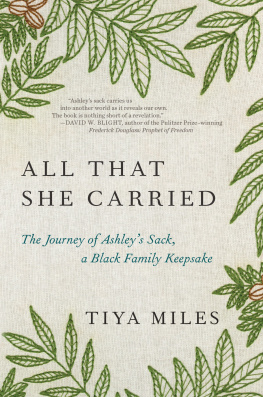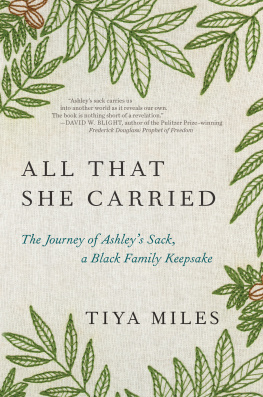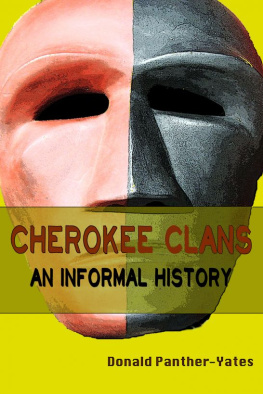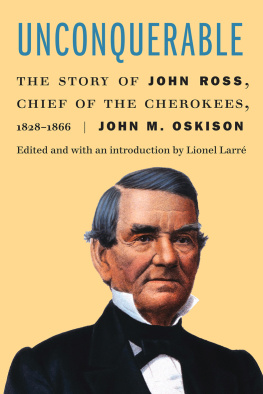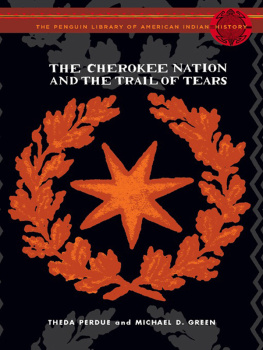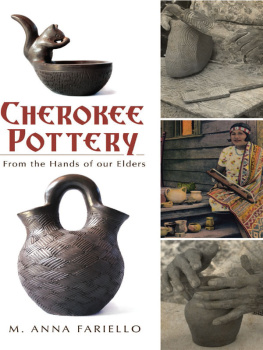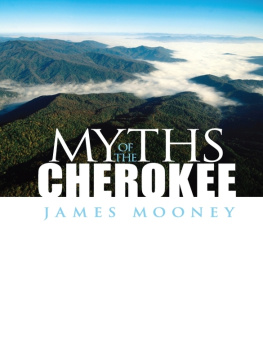THE HOUSE ON Diamond Hill
This book was published with the assistance of the Z. Smith Reynolds Fund of the University of North Carolina Press.
2010 THE UNIVERSITY OF NORTH CAROLINA PRESS
All rights reserved. Manufactured in the United States of America. Designed by Kimberly
Bryant and set in Garamond Premier Pro and Scala Sans by Tseng Information Systems, Inc.
The paper in this book meets the guidelines for permanence and durability of the Committee on Production Guidelines for Book Longevity of the Council on Library Resources. The University of North Carolina Press has been a member of the Green Press Initiative since 2003.
Library of Congress Cataloging-in-Publication Data
Miles, Tiya, 1970
The house on Diamond Hill : a Cherokee plantation story / Tiya Miles.
p. cm.
Includes bibliographical references and index.
ISBN 978-0-8078-3418-3 (cloth : alk. paper)
1. Chief Vann House (Spring Place, Ga.) 2. Cherokee IndiansGeorgiaHistory.
3. PlantationsGeorgiaSpring PlaceHistory. 4. Plantation lifeGeorgiaSpring
Place. 5. Vann, James, 1765 or 61809. I. Title.
E99.C5M5325 2010
975.8'31dc22
2009052891
Title page illustration: The Vann House: Monument to a Chief by Ken Morrison.
Used by permission of the artist.
cloth 14 13 12 11 10 5 4 3 2 1
To my parents, with gratitude and love:
mother and father, Patricia Miles King and Benny Miles
stepmother and stepfather, C. Montroue Miles and W. James King
For Pleasant, Patience, and Grace,
who called me
Contents
Illustrations and Maps
Illustrations
- The Vann House with luminaries and holiday wreaths
- Christmas by Candlelight program cover
- The dining room in the Vann House decorated for Christmas
- Oldest known Vann House photo
- Vann House brochure
- Dicksie Bradley Bandy with Joseph Vann's portrait
- Marjorie Rhodes with drapery
- A slave cabin at Carter's uarter Plantation
- Mill Creek
- The Vann House, north side
- Joseph Vann
- God's Acre grave marker
- The Vann House viewed from woods
- The Lucy Walker steamboat
- Architectural drawing of the Vann House, north elevation
- Architectural drawing of the Vann House, south elevation
- Land Preservation Campaign card
- Vann House Days flyer
Maps
- Cherokee settlements, circa 181723
- Vann plantation diagram, 1805
- Vann plantation conjectural map
- Springplace Mission diagram, early 1800s

The Vann House with luminaries and holiday wreaths. Courtesy of the Chief Vann House.
Housewarming
A PROLOGUE
Something about this house inspires lunacy in people.
Julia Autry, interpretive ranger, Chief Vann House State Historic Site, December 2006
I had trod this Georgia road many times before, but never at night, never in winter. The air was frigid, the sky gloweringly black. But out of the darkness, off in the distance, the grand house glowed. Candles shone in every window. Beribboned wreaths of evergreen hung from the double doors. The promised warmth of interior spaces, hidden from view, beckoned through the gloom. It was lovely, this old plantation house, perched, as it was, atop a hillside. Striking in its grandeur. Alluring in its light. I could almost believe, staring up at the glowing, Palladian window panes, that the year was 1806, that Cherokees still possessed the lands of northern Georgia, that the wealthy Cherokee family who once dwelled in this home would appear at a doorway in waistcoats and bustles.
But this was not 1806. It was 2006. The family who had built this house had long passed into memory, and the home was owned and cared for by Georgia's Department of Natural Resources. I had come here to attend the Chief Vann House State Historic Site's Christmas by Candlelight celebration. And I found that, as William Chase Parker, an eighteen-year-old employee of the Vann House had put it, the Christmas Spirit of the community was very much in evidence. A team of local volunteers from the nonprofit group Friends of the Vann House had readied the home for show. In the place of modern lighting, candles had been lit throughout the house and luminaries positioned along exterior pathways. Natural embellishments of dried okra pods, oiled magnolia leaves, and fanned cedar boughs festooned the interior rooms. The hand-carved mantels were topped by crimson-bowed wreaths, and inside every working hearth, a warming fire had been lit. The ornate dining table was set for a sumptuous holiday meal fit for a king or an Indian chief.
In addition to staging this event, the Friends group volunteers also hosted it, standing in the stead of the long-gone Vann family. The women Friends who guided visitors on the house tour were dressed to match the stately rooms, in festive red wraps and shawls and gold-toned jewelry that shone in the candlelight. In the parlor, Tim Howard, past president of the Whitfield-Murray Counties Historical Society, played a tune on the piano. A female tourist joined him, singing an impromptu Christmas carol to spirited applause. Children of the Friends of the Vann House members, wearing period dress of breeches and homespun cotton, also guided visitors through the home. On the third floor, in what would have been the Vann family's children's rooms, young tour guides described the games that Cherokee boys and girls would have played.

The Vann House Christmas by Candlelight program cover, 2006. Courtesy of the Chief Vann House.
In a cozy cabin adjacent to the main house, chief interpretive ranger Julia Autry, one of the two full-time employees at the Vann House, welcomed visitors with cookies and cocoa by warming firelight. She answered questions about the home and described colorful individuals in the Vann family. Christmas by Candlelight was the most popular annual event that the Vann House museum sponsored, and Ranger Chase Parker captured in words the recurring magic of the scene:
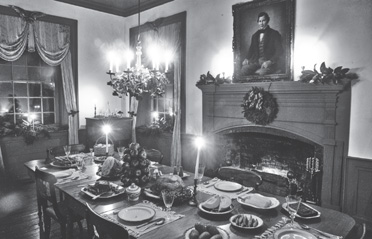
The dining room in the Vann House decorated for the Christmas by Candlelight program, with Joseph Vann's portrait on the wall. Courtesy of the Chief Vann House.
The Christmas Candlelight Tour is the most authentic celebration held at the site today. I believe that when walking through the home during those candle lit nights, one gets the closest glimpse possible of how the home looked during Joseph [Vann's] time. The night hides so much of the modernization inside and surrounding the home. Also, the way that candlelight affects people today is probably the same way that it affected people two hundred years ago. So the feeling people get when they see the candle's flame flicker and the fires' reflections sway on the walls is a feeling much like the visitors of the Vanns' did in the early eighteen hundreds.
The rare feeling that Ranger Parker described of being transported into the past was one that the public hungered for, as evidenced by the one hundred to two hundred people who were expected to tour this tucked-away historic house over the course of the two-day event. This particular 2006 holiday season, Ranger Autry explained, their numbers had reached that projected
Next page

